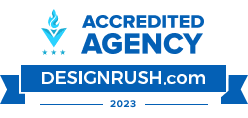Five Data Cleaning Tricks to Help Your Firm Blossom this Spring

Spring is a time for new beginnings, and what better way to kick off the season than by freshening up your data? Research shows that up to 30% of data degrades each year as people get hired, fired, move jobs – businesses open, close, merge and are being acquired. Without constant attention, this can accumulate into an expensive and frustrating pile of data that is incomplete, duplicative, or incorrect.
But in law firms, data quality issues can be exacerbated. Inaccurate or incomplete data can lead to errors, misunderstandings, and ultimately, negative outcomes for clients. This can result in costly legal and reputational consequences for the firm. Think about how inefficient it is to have your professionals, who bill hundreds or thousands of dollars an hour, pursuing business development opportunities using the same, outdated and incorrect contact list.
Data Cleaning Tricks
So, what is the best way for a firm to deal with bad data? Based on more than a decade of experience working together with hundreds of top firms on CRM and data quality projects, here are some of our top data cleaning tricks and tips for identifying and addressing data quality issues and preventing future problems.
1. Assess
The best way you can start any data cleaning project is by assessing your data quality mess. Doing this can help you answer some important questions like:
- How much bad data do we have?
- Where is it located?
- What is it costing us?
- What is the best way to clean it up?
- How long will the cleanup take?
- How much will the cleanup cost?
Assessing your data is always the first step in any data quality or CRM project. Take the time to look at how much data needs to be cleaned so you can accurately predict the budget and scope of the project.
2. Plan
A plan and strategy help identify essential tools and resources needed for a successful data-cleaning project. Planning can help firms define the overall scope and cost of a project, like how much data is involved, which data sets need to be cleaned first, and which ones can wait.
For instance, if you have a significant amount of bad data, it may be more efficient to start with an automated data cleaning and appending option. This can help to improve and enhance a large amount of data in a short amount of time and can be quite cost-effective.
Without a plan, firms often struggle to achieve intended objectives which can increase the chances of duplicative, incorrect and outdated data passing through into the system and ruining the integrity of their CRM system or other marketing technology.
3. Data Stewarding
If you have a significant amount of bad data remaining or your organization is a little fanatical about data quality, then you’ll want to consider moving forward with manual data stewarding. Manual data stewards can research, clean and append missing information to the remaining records. In addition, because law firms need good reliable data going forward, ongoing data stewarding will be essential. This can be accomplished by internal or outsourced data quality resources.
4. Data Sources
Identify other sources of bad data that are compounding contact problems. For instance, if there are existing integrations that are creating duplicates or overriding good data with bad, determine how valuable this data is. If it’s critical, find a way to work together with other departments on a solution.
5. Technology
Use software to make data quality more efficient and effective. One tool that can be particularly effective is an Enterprise Relationship Management (ERM) system. This software not only creates contacts from the signature blocks of emails, which is important because a lot of busy lawyers no longer take time to create contacts records but it can also be used to validate and fill in missing information on existing records, which means less time researching.
While it’s easy to become overwhelmed by dirty data, what’s important is to put it in perspective. Focus on discreet data and projects that yield real ROI such as:
- Start with your most relevant records like current clients. Begin cleaning your top 100 to 500 along with associated key contacts.
- Review frequently used lists to ensure your communications and invitations are reaching the right recipients.
- Vet bounced emails after each campaign, or better yet, regularly run lists through an automated data process to identify bad emails before a campaign to ensure that information actually reaches your targets in a timely manner.
- Tackle time-sensitive one-off projects. For instance, an upcoming event often provides a good opportunity to get users engaged in cleanup efforts, particularly if the event is important to them.
It’s also important to remember that because data degrades so rapidly, data cleaning can’t be a one-time initiative. Successful data quality projects never really end. The good news is that this means we have forever to get better at data quality!
If you need help starting a data cleaning project or with a current one, CLIENTSFirst can help. For more than a decade, the team at CLIENTSFirst Consulting has been helping professional services firms and other organizations successfully select and implement CRM and eMarketing systems and improve Data quality to maximize value, adoption and return on investment. If you need help achieving CRM Success, please contact us at 404-249-9914 or Info@ClientsFirstConsulting.com.







